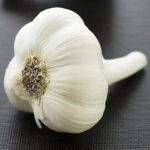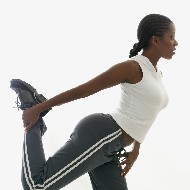 Intermittent claudication is a diagnosis for muscle pain (ache, cramp, numbness, or sense of fatigue) typically in the calf muscle, which occurs during exercise and is relieved by a short period of rest.
Intermittent claudication is a diagnosis for muscle pain (ache, cramp, numbness, or sense of fatigue) typically in the calf muscle, which occurs during exercise and is relieved by a short period of rest.
Researchers at Oklahoma University Health Sciences Center, in Oklahoma City, compared home-based exercise to a supervised exercise program. Continue reading Supervised vs home exercise to treat intermittent claudication →
 It’s one of the best-researched, best-selling herbal remedies. But what do we really know?
It’s one of the best-researched, best-selling herbal remedies. But what do we really know?
Researchers from the University of Naples Federico II, in Italy reviewed the evidence. Continue reading Garlic: Is it more than a food and a spice? →
The U.S. Food and Drug Administration advises not to purchase or consume Total Body Formula in the flavors of Tropical Orange and Peach Nectar, or Total Body Mega Formula in the Orange/Tangerine flavor.
There are 43 reports of people in 9 states who experienced serious adverse reactions. Continue reading Consumer alert: “Total Body Formula” and “Mega Formula” →
 Abdominal massage using two drops of lavender (Lavandula officinalis), one drop of clary sage (Salvia sclarea), and one drop of rose (Rosa centifolia) in 5 mL of almond oil was more effective than no treatment or almond oil alone.
Abdominal massage using two drops of lavender (Lavandula officinalis), one drop of clary sage (Salvia sclarea), and one drop of rose (Rosa centifolia) in 5 mL of almond oil was more effective than no treatment or almond oil alone.
Here are the details.
Continue reading Aromatherapy to lessen menstrual cramps →
 In the past year, several studies on this topic have appeared. The results are positive.
In the past year, several studies on this topic have appeared. The results are positive.
So, let’s review.
Continue reading Pycnogenol treatment of venous insufficiency →
 The FDA is cracking down on companies that sell quinine-containing products such as Qualaquin for non-approved uses. Their concern is over the risks of quinine to treat leg cramps.
The FDA is cracking down on companies that sell quinine-containing products such as Qualaquin for non-approved uses. Their concern is over the risks of quinine to treat leg cramps.
What’s the risk?
Continue reading FDA warns against using quinine to treat leg cramps. Options, please? →
Complementary and Alternative Medicine: Fair, Balanced, and to the Point
 Intermittent claudication is a diagnosis for muscle pain (ache, cramp, numbness, or sense of fatigue) typically in the calf muscle, which occurs during exercise and is relieved by a short period of rest.
Intermittent claudication is a diagnosis for muscle pain (ache, cramp, numbness, or sense of fatigue) typically in the calf muscle, which occurs during exercise and is relieved by a short period of rest.
 Abdominal massage using two drops of lavender (Lavandula officinalis), one drop of clary sage (Salvia sclarea), and one drop of rose (Rosa centifolia) in 5 mL of almond oil was
Abdominal massage using two drops of lavender (Lavandula officinalis), one drop of clary sage (Salvia sclarea), and one drop of rose (Rosa centifolia) in 5 mL of almond oil was  In the past year, several studies on this topic have appeared. The results are positive.
In the past year, several studies on this topic have appeared. The results are positive. The FDA is
The FDA is